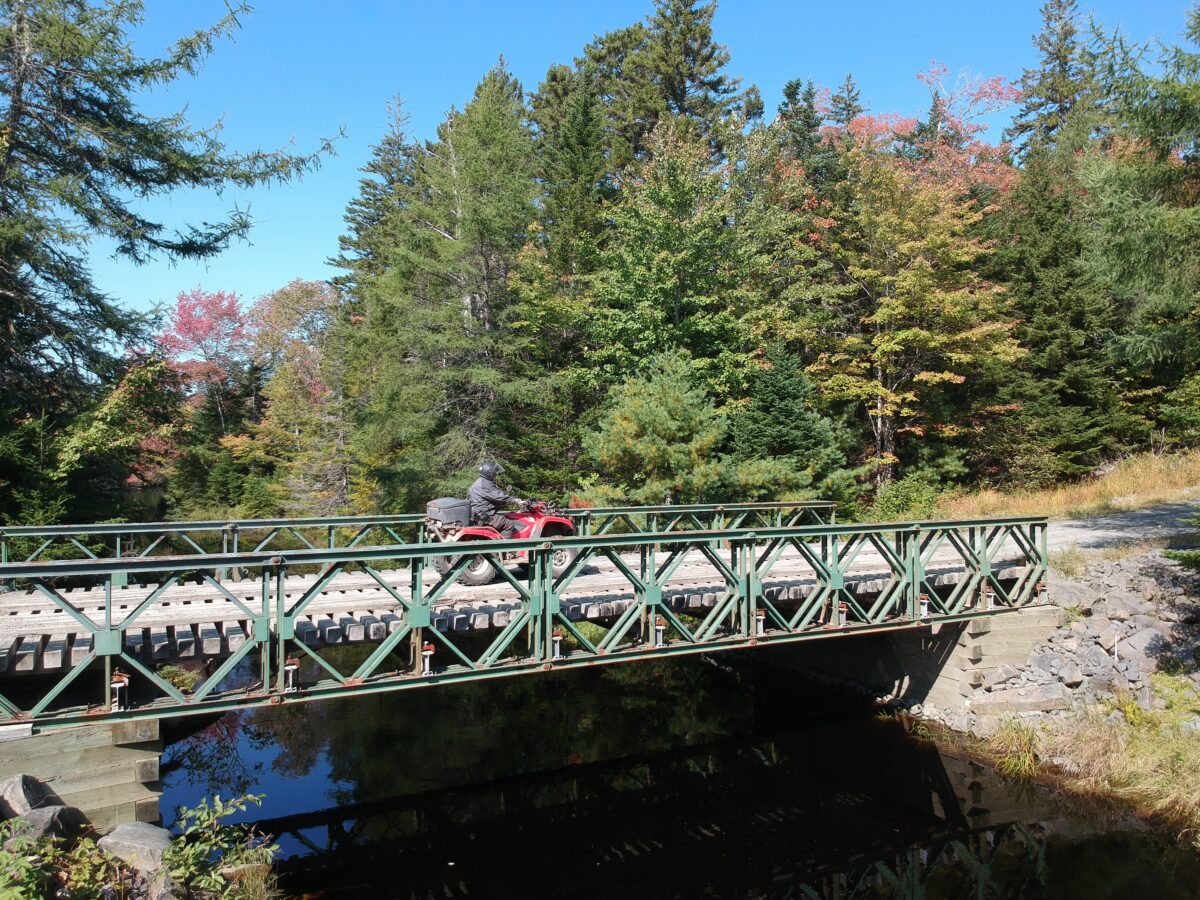Network of multi-purpose trails now spans 11,000 km

Sven Von Kintzel pulls up his gloves, pulls down his visor, and jumps on his bright red mud-covered ATV. After a quick wave, he revs the throttle and heads down the leafy trail near Sutherland Lake, Colchester County, in search of the dozen companions he’s been chasing throughout the afternoon.
“I used to ride a four-wheeler around the farm for chores, but I only got involved with it as a recreational activity three years ago,” says the 57-year-old Malagash vineyard manager. “Riding the trails across the province since then, I’ve met groups of really interesting people committed to the outdoor lifestyle. It’s invigorating.”
Von Kintzel is just one of the province’s 50,000 registered ATVers. And if the sports organizing body has its way, there will soon be more trails to explore and new economic opportunities for welcoming communities.
“We want to unite the province,” says All-Terrain Vehicle Association of Nova Scotia (ATVANS) executive director Barry Barnet, a former provincial Cabinet minister.
“We want to have an interconnected trail network so that riders in southwest Nova Scotia will be able to completely connect with riders in Cape Breton.”
While certain physical constraints technically make that dream impossible, the benefits of having a trail system that includes most of the communities in the province can’t be overlooked.
All-terrain vehicle clubs and the associations that organize and manage them have become big business.
“We’ve determined that somewhere around $890 million a year is spent on ATVs in the province of Nova Scotia. And that goes into a variety of things — obvious things
like fuel, but also food and restaurants, overnight accommodations, equipment and machinery,” says Barnet.
“It’s actually astounding how much the economic value of our sport is.”
To optimize the use of existing trails and support new infrastructure that is safe and environmentally responsible, the province dedicates a portion of the annual off highway registration fee paid by each rider to a special trails infrastructure fund.
Barnet says that $2 million generated annually is often matched by local governments or supporting organizations, “so it’s a lot of money going into trails.”
In an effort to grow the ATV community, ATVANS coordinates efforts with other nearby provincial ATV associations to make it easier for riders from other areas to do business in Nova Scotia.
“If you are a member of our organization, you’re able to ride in Ontario, New Brunswick and P.E.I. without acquiring an additional permit and vice versa.”
Streamlined logistics translate directly into tourism dollars for the province and the individual clubs.
This is why there’s been such a push to connect the trail systems into one cohesive whole, and ATVANS is dedicated to sharing its expertise to help advise the various clubs on how to develop their own regional network. The provincial trail network currently consists of about 11,000 kilometres of both established and managed trails.
“Managed trails are ones where we actually have a land-use agreement on the property and we maintain the trail on behalf of various property owners, including,
in some cases, the province,” says Barnet.
“Established trails are trails that were established before 2006 where landowners have not revoked the opportunity to ride. In total, about 2,000 kilometres of our trails are managed and the other 9,000 are established trails.”
Respectful and responsible relationship management with the various landowners in the province is one of the most vital items on the trail association’s agenda.
This expertise is just one of the many things passed on by ATVANS to the local ATV organizations.
“ATVANS helps support the clubs in a number of ways,” says Digby County ATV Club president Keith Comeau.
“They have a vast knowledge of the trail systems, in building and maintaining them, and they help clubs in getting provincial OHV (Off-Highway Vehicle) grants.
“They also hold the insurance coverage on the managed trail systems and on ATVANS clubs’ events, so it takes a lot of the worry out of planning events and managing trails,” says Comeau.
The ATVANS trail strategy is unique in that, when it participates in trail development, the end result will be a multi-use trail accessible to everyone, not just ATV enthusiasts.
“We invest over $1 million a year in funds towards projects on trails across the province. And it doesn’t necessarily have to be an ATV trail, but it has to be open to ATVs.”
“We’re a key factor in maintaining these multi-use trails around the province and the province recognizes that we have so many user groups,” says Barnet. “It’s a good partnership.”
“By the end of this 2023 year, we’ll be at 7,000 members, 42 clubs and we’ve continued to add to and develop our trail network,” says Barnet.
“What we’ve done is identify areas where we don’t have clubs and where there is less of an organized trail network and we work at establishing one. Areas like Eskasoni, for example, we see as an opportunity to make some natural connections.”
As for what it takes from the club’s end of the relationship, Comeau has some insights.
“The key components necessary for making things happen,” he says, “are being organized, having a reliable volunteer base, working closely with neighbouring clubs and the local enforcement agencies, asking for help when needed and delegating
responsibility to people with the right strengths.”
“We want to make sure that the clubs recognize that they are individual organizations as well,” says Barnet, “and we want to make sure they run their club in a business-like manner, which benefits everyone.” Comeau agrees. “When you have that many extra people coming to town, it really impacts the local area economically.”
For information on the All-Terrain Vehicle Association of Nova Scotia, phone 1-877-288-4244 or visit www.atvans.org.



